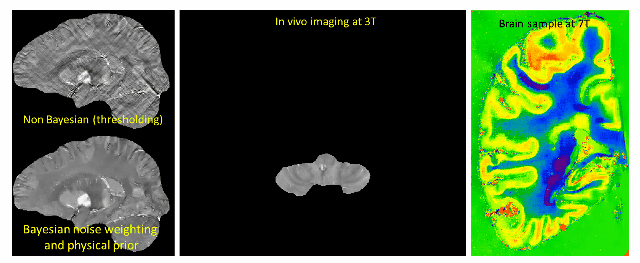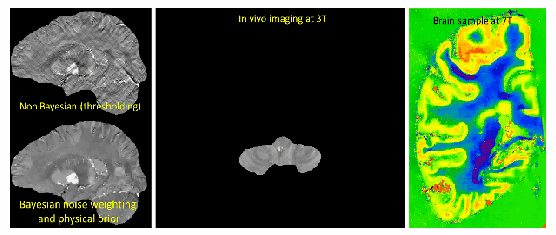Shuai Wang, Tian Liu, Weiwei Chen, Pascal Spincemaille, Cynthia Wisnieff, A. John Tsiouris, Wenzhen Zhu, Chu Pan, Lingyun Zhao, Yi Wang
Volume 60, Issue 12, Page:3441-3448

To study tissue magnetism using the magnetic field information in standard MRI phase data, quantitative susceptibility mapping (QSM) methods have been developed by solving the magnetic field to susceptibility source inverse problem. Regularization has to be used to address the ill-posedness. A solution may be prone to noise: the non-uniform noise in MRI phase propagates to the QSM solution as streaking artifacts if noise whitening is not used. In this paper, various QSM methods were systematically analyzed for noise performance: non-Bayesian methods are intuitive but have difficulties accounting for noise properties; Bayesian methods allow proper considerations of data noise properties. Experimental assessments were performed on six representative QSM methods: two non-Bayesian methods with alteration or approximation of the dipole kernel to overcome the ill conditioning; four Bayesian methods using a general mathematical prior or a specific physical structure prior to select a unique solution, and using a data fidelity term with or without noise weighting. The effects of noise in these QSM methods were evaluated by reconstruction errors in simulation and by image quality in 50 consecutive human subjects. Bayesian QSM methods with noise weighting consistently reduced root mean squared errors in numerical simulations and increased image quality scores in the human brain images, when compared to non-Bayesian methods and to corresponding Bayesian methods without noise weighting (p < 0.001). In summary, noise effects in QSM can be reduced using Bayesian methods with proper noise weighting.

